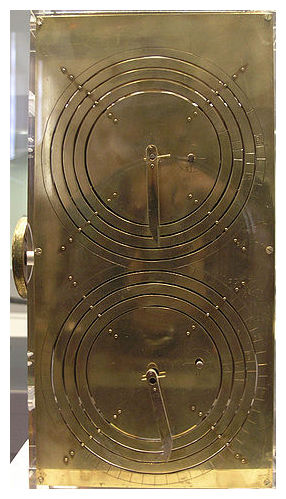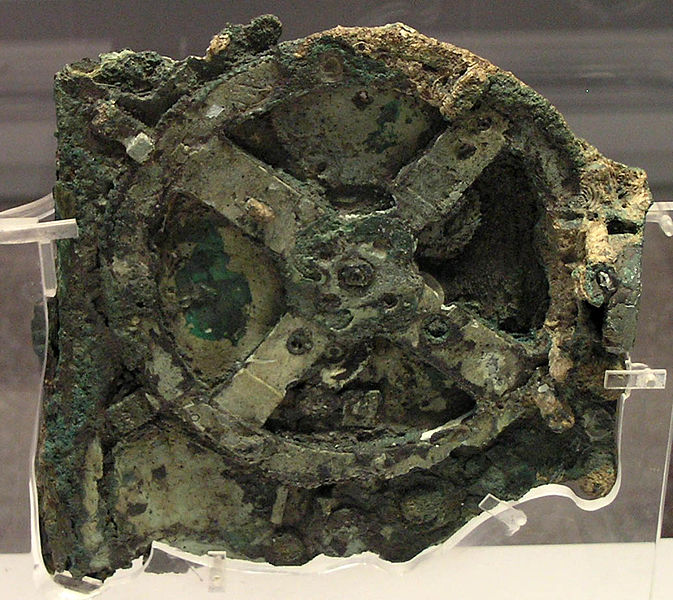The Antikythera mechanism was lost to the world for centuries. The device was salvaged in 1900 from a ship that sank en route to Rome, in the 1st century BC, between Crete and the island of Antikythera in the Mediterranean. When one of the fragments was discovered to contain a bronze gear wheel, the idea that this was some kind of astronomical clock was dismissed as too fantastic an anachronism. It was not until 1951 that the investigation was picked up by a British science historian Derek J. de Solla Price. So far 82 fragments have been recovered of what is now considered the oldest known astronomical computer.
The device is made of bronze and contains 30 gears though it may have had as many as 72 originally. Each gear was meticulously hand cut with between 15 and 223 triangular teeth, which were the key to discovering the mechanism's various functions. It was based on theories of astronomy and mathematics developed by Greek astronomers who may have drawn from earlier Babylonian astronomical theories and its construction could be attributed to the astronomer Hipparchus or, more likely, Archimedes the famous Greek mathematician, physicist, engineer, inventor and astronomer. Why it was built, or for whom is unknown.

The dial probably bore three hands that marked the date and positions of the Sun and Moon, while a separate mechanism showed the Moon's phases and it likely also displayed the 5 classically known planets, Mercury, Mars, Venus, Jupiter and Saturn.
On the back an upper dial showed 19 year Metonic cycle of Moon phases, the 76 year Callippic cycle (four Metonic cycles) and calculated the 4 year Olympic cycle (four games took place in two and four year cycles).
The lower dial showed the 18 year 11 days Saros eclipse cycle and the 54 year 33 day Exeligmos or triple saros cycle.
It was driven by a hand crank now sadly lost. It is small, compact and portable with full instructions engraved upon it in Greek, about 95% of which have now been deciphered.
The fragile pieces that remain have been examined and modeled using high-resolution X-ray tomography and gamma rays and various reconstructions and replicas have been built.
It has even had a working model constructed out of Lego.
I can't helping thinking that Archimedes would have rather liked Lego, if only we could go back in time and give him a set...




Reader Comments
to our Newsletter